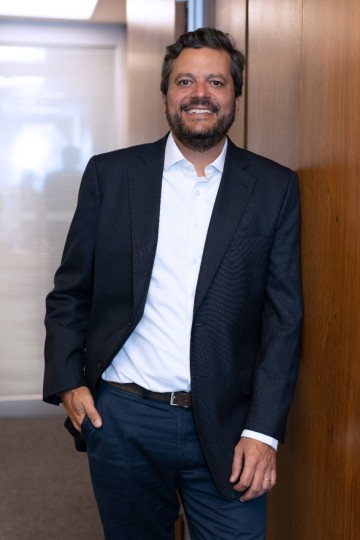On December 23, 2022, the Brazilian Securities Commission (Comissão de Valores Mobiliários – "CVM") enacted Resolution n. 175 ("Resolution 175"), which sets forth new rules for the incorporation, operation, disclosure of information and provision of services for investment funds (“Funds”).
The new resolution, long awaited by the local market, regulates the provisions of the Economic Freedom Law (Lei da Liberdade Econômica - Law n. 13,874/2019) on Funds, with the purpose of modernizing the regulatory framework applicable to the matter.
The main focus of the changes was to make the regulation compatible with the practical standards adopted in other relevant jurisdictions for the Funds industry, such as the attribution of a greater role to the Funds' asset managers, granting them more autonomy while increasing their obligations and responsibilities.
Resolution 175 is divided into a general part and normative annexes. The rules set forth in the general part are applicable to all categories of Funds. The general rules are then complemented by the specific rules for each Fund category in its respective normative annex, with such specific rules prevailing in case of conflict with the general rule. In CVM's view, the proposed format simplifies the market's understanding and contributes to reducing the cost of regulatory compliance.[1]
The first Fund categories to be object of Normative Annexes were the Financial Investment Fund (“FIF”, currently referred to as "Funds 555", in reference to the rule that regulates them, Instruction CVM n. 555, of 2014) and the “Receivables Investment Funds” (“FIDC”), but Resolution 175 will be later amended to encompass other categories of Funds, adding up to the FIF and FIDC normative annexes.
In practical terms, Resolution 175 has brought a series of important innovations, which are highlighted below:
Civil Insolvency: Resolution 175 allows the application of the institute of civil insolvency to the Funds and the possibility, but not the requirement, of limiting the liability of quotaholders to the value of their subscribed quotas.
Classes and Subclasses of Quotas: Resolution 175 introduced the possibility of different classes of quotas for the same Fund, with distinct rights and obligations, each representing a segregated portfolio to be created by the Fund’s administrator, similarly to “segregated portfolio companies” in certain jurisdictions. In the same way that assets belonging to the segregated portfolio represented by a class of quotas do not affect other class(es) of the same Fund, the holders of quotas of a specific class will be liable only for the obligations related to that class, and not the other(s). Resolution 175 also admits the division of classes into subclasses, differentiated by target investors, terms and conditions for contributions, amortization and redemption, or administration, management, maximum distribution, entry and exit fees, but representative of the same portfolio.
FIF: Under Normative Annex I of Resolution 175, there was an expansion of the of financial assets that can be acquired by FIFs, which now include environmental assets (such as carbon credits), and crypto assets, provided that certain criteria are met, in the wake of Law n. 14,478/2022, which establishes guidelines for the provision of virtual assets services and regulation of virtual assets service providers. To this date, the investment in crypto assets by Funds was only allowed indirectly, through foreign entities.
FIDC: Normative Annex II of Resolution 175 brought many innovations to FIDCs, the most important of which is the possibility of creation of classes targeted at the general public (i.e., retail investors) - provided certain requirements are met -, expanding the reach of such Funds, currently restricted to sophisticated investors.
The definition of “credit rights” was also remodeled by the new rule, appeasing any remaining discussion on the eligibility for the FIDC portfolio of securities representing credit, such as debentures and commercial notes, as well as certificates of receivables, among which Real Estate Receivables Certificates (Certificados de Recebíveis Imobiliários – CRI) and Agribusiness Receivables Certificates (Certificados de Recebíveis do Agronegócio – CRA), and other securities representative of securitization transactions, such as securitization debentures.
Additionally, following the greater protagonism conferred to asset managers by Resolution 175, these service providers will now concentrate at least two duties that were, to this date, vested by the FIDC custodian, namely, the verification of the compliance of credit rights with the eligibility criteria set forth in the Fund's bylaws and verification of the documents that support the credit rights in the FIDC’s portfolio. However, the asset manager will be allowed to hire, under its responsibility, a third party to verify such supporting documents, including the registration entity, the custodian or specialized consultant, provided that this third party is not related to the fund’s asset manager.
Normative Annex II also establishes, generally, the need for the FIDC administrator to hire credit rights registration services with an entity authorized to operate by the Brazilian Central Bank. However the rule provides, exclusively with regard to credit rights that may not have a capable registration entity, the possibility that such rights are handed to the custodian.
Moreover, CVM lifted some restrictions regarding conflicts of interest within the scope of FIDC, such as the prohibition on origination and assignment of credits by the asset manager, specialized consultant, fiduciary administrator and related parties. Also, for classes of quotas that are restricted to professional investors, the fund administrator, the asset manager, the registration entity and the custodian of the credit rights can be related parties.
Resolution 175 will take effect on April 3, 2023, and any Funds operating on that date must fully adapt to the new rule by (a) December 31, 2024, for Funds in general, and (b) December 31, 2023, in the case of FIDC.
Once effective, Resolution 175 will revoke several other rules, such as, for example, CVM Instructions n. 555, 356 (which regulates FIDC), 472 (which regulates Real Estate Investment Funds – “FII”), and 578 (which regulates Private Equity Investment Funds – “FIP”).
Therefore, it is expected that the relevant Normative Annexes regarding FII and FIP are issued early 2023.
Resolution 175 can be accessed in full here.[2]
For further information, please contact FreitasLeite’s Financial and Capital Markets practice area.
[1] Available at https://www.gov.br/cvm/pt-br/assuntos/noticias/cvm-publica-novo-marco-regulatorio-dos-fundos-de-investimento (in Portuguese only).
[2] Available in Portuguese only.






